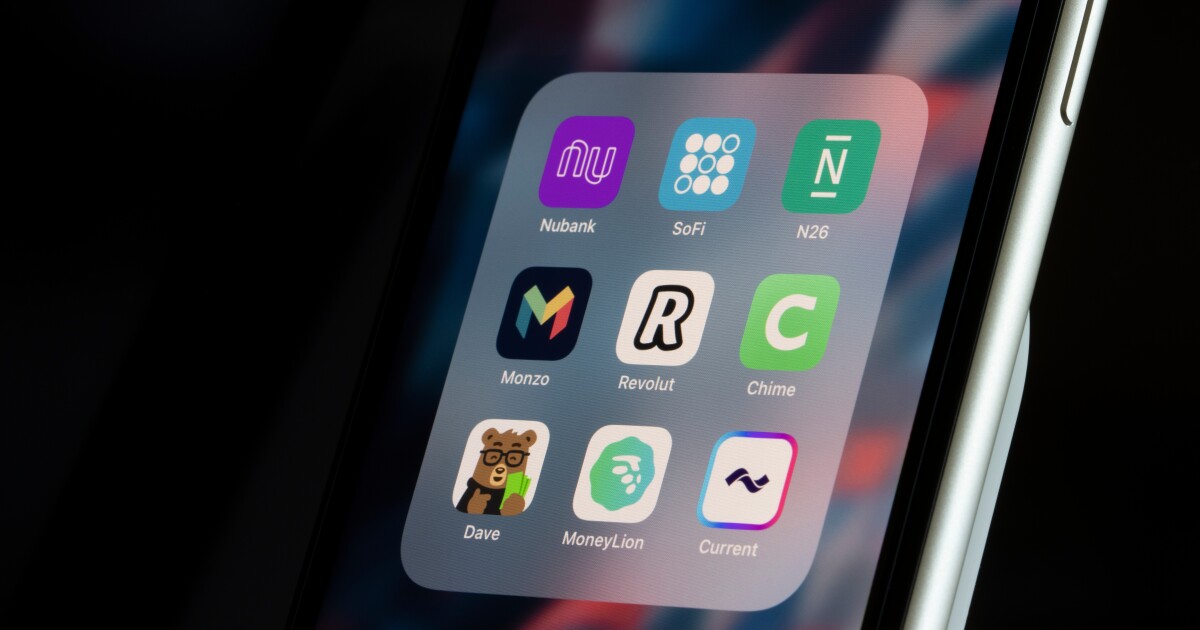How Neobanks Are Changing Financial Services

With the development of internet technology, digital transformation has started to take place in many sectors. The financial sector, which is an industry where this transformation takes place relatively faster, appears in both organisations and customers. The banking industry has been undergoing great transformation for the last ten years. Neobanks, fintech, and even mobile payment solutions are the biggest actors causing this disruption. In this article, we’ve compiled detailed research on how neobanks, which directly concern banks, changed the banking sector and the future of neobanking and finance.
What Are Neobanks?
Neobanks, which emerged in the UK after the financial crisis of 2007-2009, are defined as financial technology institutions that do not have physical branches. Thanks to the neobank system, which is also defined as branchless banks or digital banks, it is aimed that users can perform all their financial transactions from devices with internet access, such as computers and phones. Various financial services, such as payment, money transfer, loans for individuals and businesses, and budgeting assistance, can be offered to users in a fast and practical way thanks to this system.
The Growth of Neobanking
Traditional banks are losing popularity to neobanks, which have advanced internet bank branches and where all financial transactions are carried out. Neobanks, unlike traditional banks, lay their foundations with new generation technological infrastructures. Thus, it offers its products and services to the market with a faster and more user-friendly experience. Since they do not keep cost items, such as the branch channel in their balance sheets, they take advantage of their cost advantages with low commission and interest rates.
The Most Popular Neobanks
Neobanks, which have been rapidly increasing in popularity since their inception, reshape the future of finance. Neobanking, providing convenience and an advantage beyond traditional banking, challenges the traditional banks of the financial world. That’s why a fair amount of them are called challenger banks. According to a Forbes Advisor report, the most popular neobanks are as follows.
NAME YEAR BASED IN OFFERS ACCOUNTS CHIME 2013 USA Financial technology company Chime provides credit creation opportunities, early access deposit payments, competitive APY, and automatic savings. 12 million + VARO BANK Established as a neobank, Varo Bank became a national bank in 2020 USA It offers similar working benefits to Chime. In addition, users do not need a credit check to open an account. 2 million + CURRENT 2015 USA Early access to direct deposits, free overdraft, and debit card purchases 4 million + REVOLUT 2015 UK Low exchange rates and withdrawal fees, ability to send and receive money internationally at affordable rates 15 million + STARLING 2017 UK Along with the advantages offered by other competitors, it also provides a physical card as well as a mobile bank. 3 million + METRO BANK 2010 UK A full range of banking and financial products/services with corporate, commercial and consumer banking, credit card, remittance, leasing, investment banking, and trust banking 2.6 million How Are Neobanks Challenging Traditional Banks?
It increases the competitiveness of neobanks by offering the most used financial transactions to users in a much simpler and faster way compared to traditional banking systems. Neobanks typically focus on a narrow use and product, thus identifying and resolving issues with that product or service in the best way possible. So it provides user-friendly financial ease of use. Focusing on meeting consumer needs in the most convenient way possible, neobanks address internal and external challenges. Internal challenges include scaling, customer acquisition, new business models, and regulations. In addition, external challenges include existing banks, market resources, offerings, and re-engineering challenges.
The Business Model of Neobanks
Neobanks can gain profitability with LTV/CAC rates. These systems can be briefly summarised as follows:
- LTV (Life-Time Value): This ratio is the lifetime value of the customer. In short, this value is the ratio that shows the value of the customer in any time period. This value must be high for the LTV/CAC ratio to be high.
- CAC (Customer Acquisition Cost): This value is the cost of acquiring a customer. In order for the LTV/CAC ratio to be high, this value must be extremely low.
How Neobanks Are Changing the Financial Industry
Neobanks, or branchless banking, is a very different dimension of digitalisation in the banking sector. It is possible to say that branchless banking has been a known concept for a very long time. The global crisis that occurred in 2008 especially caused the confidence in the traditional banking system to be shaken. The concept of fintech brings finance and technology together, and is closely related to branchless banking. This concept, which emerged in the 1900s, came to the fore after the global economic crisis.
Entrepreneurs with fintech start-ups collaborated with traditional banks to take different steps in the traditional banking system. Fintechs, which created digital banks with lower costs and do not have any branches, stepped into the finance sector and brought the concept of neobank to the fore.Customer Service
Due to their operating systems and position in the financial industry, neobanks focus on meeting the needs of existing customers in the best way rather than acquiring new customers. This is among the most important differences that distinguish neobanking from traditional banking. According to a study by J.D. Power, almost 50% of users show that dealing with a customer representative or service can be more effective than other methods of meeting their needs.
Technology
With the development of artificial intelligence, the internet of things, and blockchain technologies, the banking industry has also evolved. As a matter of fact, Starling, which used to work with B2C technology, has taken its operating system to the next level with its Banking as a Service (BaaS) technology. Using these technologies, neobanks have diversified their products and income streams.
Pros and Cons of Neobanks
Neobanks’ technology infrastructure, user-friendly customer service and financial transaction services are seen as the most important features that distinguish them from traditional banking activities. The pros and cons of neobanks in terms of customer service and financial transactions are as follows.
Pros of Neobanking:
- Opportunity to open an account more easily and quickly
- Cost savings in international payment and collection activities
- Timely and on-site alerts for financial activities, such as reconciliation transactions in the account, asset and investment management of smart systems
- Low-interest loan and lower-cost fund transfer opportunity compared to other financial institutions,
- Opportunity to quickly and easily access funds requested by the disadvantaged commercial institutions, thanks to its smart systems.
- Opportunity to access fast, effective and appropriate solutions in the selection of investment vehicles, investment decisions and management.
Cons of Neobanking:
- Since it is not a physical bank, there is no bank charter. In this case, the bank forms a partnership with a bank to insure the products.
- As long as the physical branch does not exist, all transactions are carried out in the digital environment. In this case, there is no such thing as face-to-face support.
- The service framework is more limited compared to traditional banks.
- Neobanks focus on checks and savings rather than loans.
Neobanks and the Future of Finance
According to Simon Kucher’s recent report, The Future of Neobanking, around 1 billion customer accounts worldwide use neobanks. It is also predicted that this customer satisfaction-centred system will double the number of customers in the next few years. This shows that neobanks, which have taken their place in the sector with a digital banking licence and offer a fully digital user experience, are likely to overtake traditional banking in the future. In addition, according to a Bloomberg report, it is predicted that 50 million users will use the neobank system by 2028, with an annual increase of 50%.
Building a Neobank is Easier Than Ever
With today’s technology, everything digital is more reachable than ever before, and the same rules apply to building a bank. It may sound too bold, but it really is. As a SaaS and PaaS company that focuses on financial services and eCommerce, we’ve done it tens of times. And every year, we see that neobanks are becoming more and more powerful among the traditional ones.
To have a smooth process of developing a neobanking infrastructure, the most mindful way is to outsource, and our Future-Ready Fintech Solutions Platform is packed with all of the features that a bank needs.
Read more on why it makes sense for finance companies to outsource their technology.
With our platform, it takes less than a year to build all of the digital infrastructures of a neobank. The reason why we can develop such a serious system so fast is that we have the platform ready to be customised to the demands of any financial service. And of course, our thirteen-year-long expertise in the area.
Who Are We?
Tmob | Thinks Mobility is a global technology powerhouse specialised in digitalisation and integration solutions, bringing growth and success to businesses and partners with its innovative SaaS, PaaS, and premium solutions since 2009 with Tmob Turkiye (TR) and Tmob United Kingdom (UK) headquarters.




